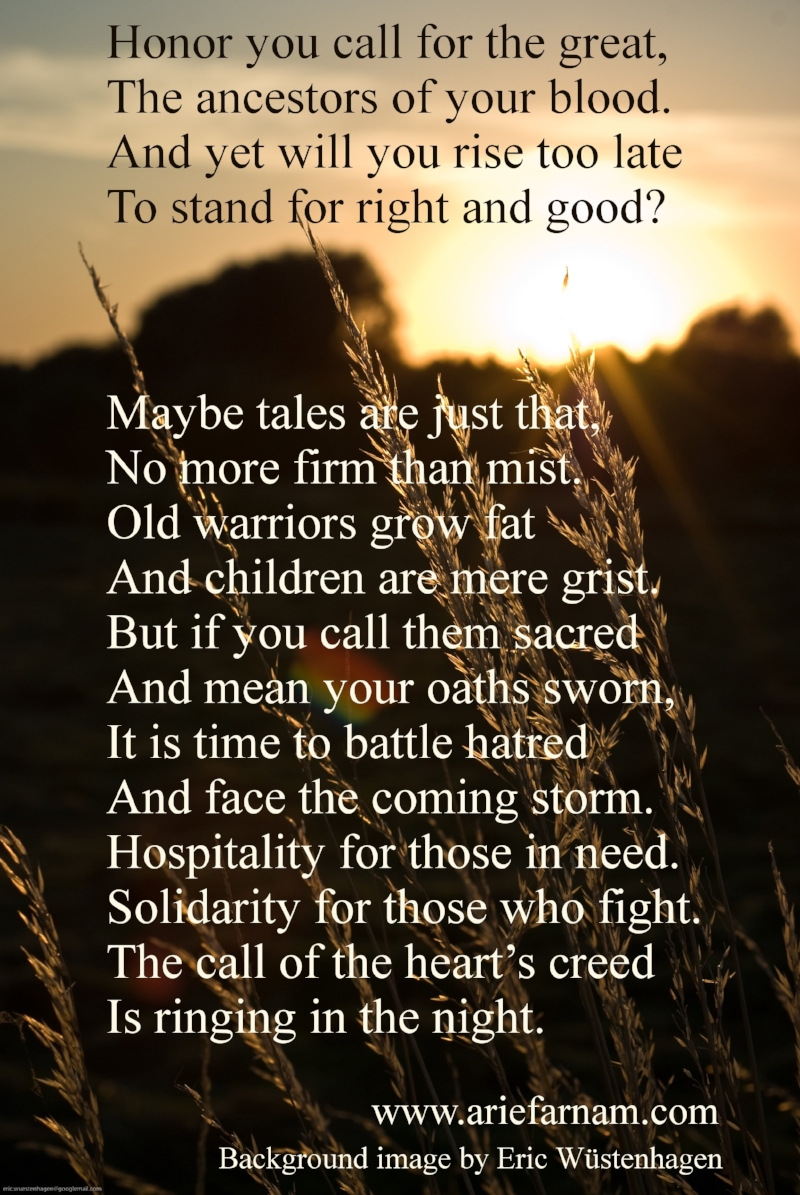Oya is the mother of nine children and my Mother Goddess for Samhain. She is a bit dark compared to most mother goddesses. Her connection to hurricanes, the transformative number nine and strong emotions of rage or fear may be frightening to some but I quickly connected with this goddess. While it is not comfortable to face these emotions, allowing them to be expressed can bring healing. I don’t necessarily want to go through hard times again, but I know that Oya can also play a part in healing from traumatic experiences, ecological devastation and social injustice. (Caputi 2004) A wild wind on a dark Samhain night is the time for Oya. Dressing up in ways that express dark and powerful emotion may be perfect way to honor her.
Baba Yaga is my Samhain crone. The contemporary stories that include her are scary enough to satisfy even secular concepts of Halloween. She is death, destruction and power, but she also grants wishes and punishes the unjust, the lazy and the apathetic bystander who tolerates injustice. (Greenfield (2014) To honor her we may make sacrifices in our lifestyle that help to redress imbalance or injustice or make commitments (Samhain resolutions of a sort) to work actively for justice and earth protection.
Yule
Yule is already a very busy holiday for us. We have several cultures and an extended family to deal with. There are presents, big meals and various traditions happening every which way. Add to that the fact that we’ve been on a different continent away from home for two years but now we’ll be home, trying to reconstruct our home traditions. It is easy for the spiritual aspect to be overshadowed and almost impossible to hold any sort of small family ritual. The one thing we do always have is a Yule tree with decorations and usually a small scene of figures under it. This is one place where we can bring in the Goddess.
I try to hold a brief dawn greeting of the sun with my husband and children on the morning of the Solstice. We usually also pull off a candlelight dinner the evening before with expressions of what we are thankful for and Solstice Tarot readings for the adults.
It is into this part of the Yule celebration that I would like to bring some celebration of the Goddess. Usha, the Indian goddess of dawn, is my Maiden Goddess for Yule. Her twin sister is Night and they share the nursing of a child. They walk the same path, each in her own particular way. (Agrawala 1984).Her symbols might be a figure of an infant that is both dark and light or an infant wrapped in silk cloth with Indian designs.
Ekhi, the Basque sun goddess (Sykes 2002) and motherly protector of humanity, is my Mother Goddess for Yule. She assures her children of hope and the eternal return of morning. She is a mother but is also born from the “reddish seas.” She reminds us of the need to stay a while in darkness in order to regenerate creative energy. She can be symbolized by a mother figure dressed in red or carrying a torch.
Hekate is the Crone Goddess for Yule. She is a goddess of time, fate, solitude and witches, a mistress of the dead and “Keeper of the Keys to the Cosmos.” (Moss 2015) She can be symbolized by the figure of an old woman with a lantern or a key.
Figures for these goddesses can be made out of clay or other materials and placed under the Yule tree. We can honor Ekhi at the candlelight feast on the eve of the Winter Solstice with poems of hope and thanksgiving for the promise of hope in difficult times. We can honor Hekate during the late night ritual of Solstice Tarot readings, lighting a candle in a small lantern. We can honor Usha at dawn when the sun returns.
Bibliography
Agrawala, P.K. (1984). Goddesses in Ancient India. New Dehli, India: Abhinav Publications
Auset, B. (2009). The Goddess Guide: Exploring the Attributes and Correspondences of the Divine Feminine. Woodbury, MN: Llewellyn Publications.
Caputi, J. (2004). Goddesses and Monsters. Madison, WI: University of Wisconsin Press.
Chaudhuri, S. K. (2003). Hindu Gods and Goddesses in Japan. New Delhi, India: Vedams.
Daimler, M. (2016). Pagan Portals - Brigid. Winchester, UK: Moon Books.
Greenfield, T. Ed (2014) Naming the Goddess: Washington, DC. Moon Books
Hunt, L. (2001). An Illustrated Meditation Guide: Celestial Goddesses. St. Paul, MN: Llewellyn Publications.
Leeming, D. and Page, J. (1994). Goddess: Myths of the Female Divine. New York, NY: Oxford University Press.)
Loar, J. (2008). Goddesses for Every Day. Navato, CA: New World Library
MacLeod, S. P. (1960). The Devine Feminine in Ancient Europe. Jefferson, NC: McFarland and Company, Inc. Publishers
Monagham, P. (1997) The New Book of Goddesses and Heroines: Woodbury, MN. Llewellyn Publications
Monagham, P. (2014). Encyclopedia of Goddesses and Heroines. Novato, CA: New World Library
Moss, V. (2015). Pagan Portals Hekate: A Devotional. Hants, UK: Moon Books
Motz, L. (1997). The Faces of the Goddess. New York, NY: Oxford University Press
Sass, R. (2003) The Old Saxon Language and Heathenry. Robert Sass)
Shaw, M (2006). Buddhist Goddesses of India. Princeton, NJ: Princeton University Press.
Slocum, S. K. Ed. (1992). Popular Arthurian Traditions. Bowling Green, OH: Bowling Green State University Popular Press.
Sykes, E. (2002). Who’s Who in Non-Classical. New York, NY: Routledge.
Warch, M. L. 2014). White Buffalo Woman. In T. Greenfield (Ed.), Naming the Goddess (pp. 328 - 330
Weber, C. (2015). Brigid: History, Mystery and Magick of the Celtic Goddess. San Francisco, CA: Weiser Books
Woodfield, S. (2014) Drawing Down the Sun: Rekindle the Magick of the Solar Goddesses. Woodbury, MN. Llewellyn Publications























